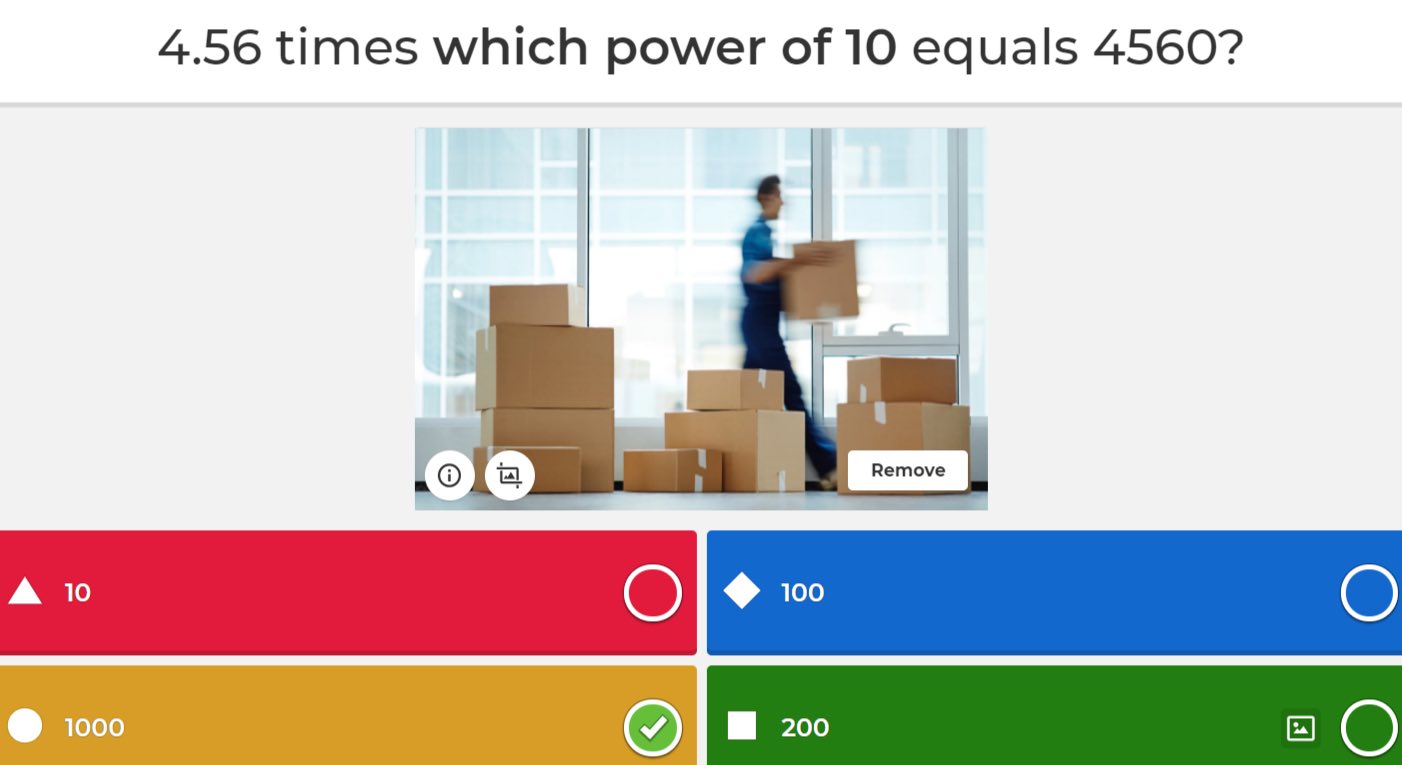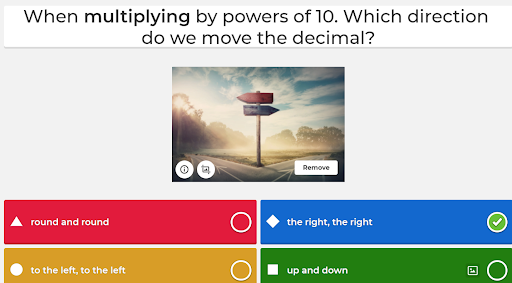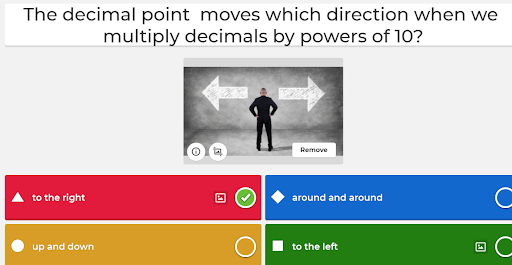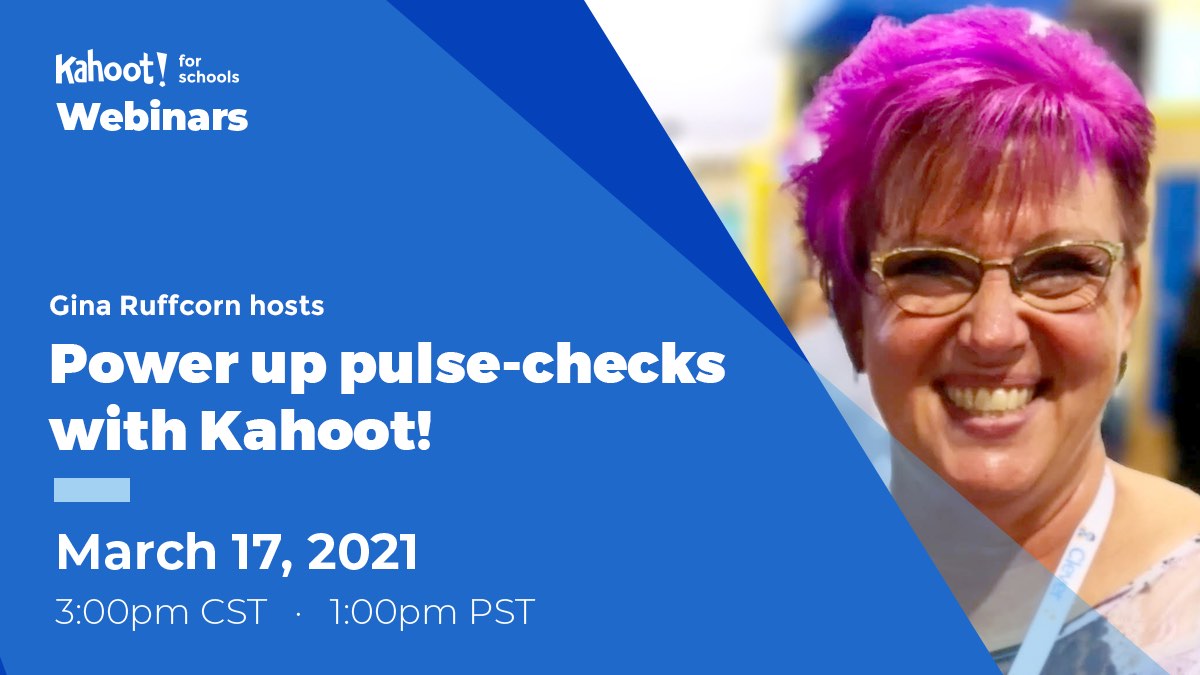I believe that collecting immediate feedback and using it for assessment is instrumental to any format of teaching, particularly in the current educational environment. I need to know what and how my students are doing. Now, as I don’t always see them face to face (most kids are at school now but some join remotely), making this happen requires a digital push.
Assessment has to be easy for the teacher and students. The data needs to be simple to read, without any additional analysis, calculations or printing. If I see kids don’t understand something, I can make necessary changes right away. Kahoot! has been perfect to facilitate assessment – all the instant feedback is there!
Pulse-checks as the main form of assessment
Pulse-checks with Kahoot! are my go-to way of assessing students quickly. We’re using Kahoot! to review material we covered a while ago and check knowledge retention before we move on to the next topic.
For example, we are getting ready to learn long division with decimals. I need to check if my students remember which direction to move a decimal before we launch into the long division unit. It’s essential for me to understand how much knowledge they retained before we learn a new skill that builds on a previous one.

An example of a question Gina uses to pulse-check knowledge
When my class was fully remote, I used poll questions very frequently. Playing Kahoot! makes everyone feel included, no matter where they are. The kids love being part of a kahoot! Whether they’re in class or at home, they need to feel they’re together rather than working independently.
Creativity and adaptability prepare students for standardized testing
For our school, proficiency goals are set by the district and, of course, I’d like to see my students be successful. However, assessment is more than just building proficiency! My goal is to enhance students’ flexibility, creativity, and adaptability. Say, if I added the same question phrased in different ways to my kahoots, I expect to see that they can adapt their responses accordingly.

Gina changes wording of questions to encourage students to adapt their knowledge

In the long run, it supports deeper learning and develops the subset of skills to understand and remember concepts, not just facts. Instead of recalling something automatically, I’d like students to understand what’s really being asked contextually in the question. Kahoot! helps me prepare them for standardized tests as wording is becoming a much more important factor there.
5 tips to make pulse-checks more impactful with Kahoot!
Based on my experience, here’s what I’d recommend to other educators to power up pulse-checks with Kahoot!:
- Set guidelines
If the idea is to truly know what your kids understand, it’s important you set down some guidelines ahead of time. That way, nobody feels influenced by the rest of the class. You get a solid accurate answer for what they know and what they need to review.
- Do pulse-checks frequently
The more your students get used to pulse-checking, the easier it is to begin to use this form of assessment consistently as a way to get immediate feedback and plan out your lessons, or allow you to reteach the issues that are causing confusions.
- Don’t grade your pulse-checks
It’s never a summative assessment. You’re just checking where students stand so you can smooth out any misconceptions or confusions right away.
- Add some humor
Throw in a funny question or answer alternatives to your pulse-check kahoot. Learning should not be laboriously painful. The other day, I asked “What are decimals used for?” and I put in “grilled cheese sandwiches”. Students need something to laugh at every now and then!
- Use relevant imagery
Tie the images you use in your kahoots to the topic. Let those visual clues continue to support your learners.This can give kids that extra leg up.
Hear more about Gina’s great experience of using Kahoot! for assessment and discover ways to power up pulse-checks by joining our free webinar!









